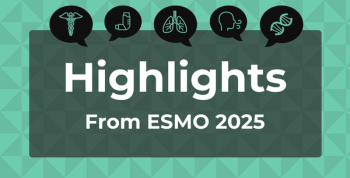
Treatment and Diagnosis Impact of Potential Standardized Long COVID Definition; Lauren Wisk, PhD
Lauren Wisk, PhD, discusses the implications of an all-inclusive long COVID definition and its application in clinical practices.
Captions are auto-generated.
Long COVID has been defined in multiple ways by various organizations, but none of these definitions are fully consistent or optimized for clinical practice. This lack of standardization affects accurate diagnosis, recordkeeping, and research comparability—thus delaying appropriate treatment. A new study published in JAMA Network Open sought to evaluate and compare definitions from 5 published studies with data from the Innovative Support for Patients With SARS-CoV-2 Infections Registry (INSPIRE; NCT04610515) cohort.
The analysis revealed only 5 symptoms common across all definitions: “more tired than usual,” “pain or tightness in chest,” “diarrhea,” “decreased or changed smell,” and “fatigue, tiredness, or exhaustion.” According to lead author Lauren Wisk, PhD, assistant professor in the Division of General Internal Medicine and Health Services Research at the University of California, Los Angeles, the purpose was not to support a single definition but to examine how existing ones compare and their implications for identifying individuals who believe they have long COVID.
The INSPIRE cohort included 6044 participants, with 75% completing the three-month follow-up; 3521 were COVID-19 positive, while the remainder were COVID-negative but had similar respiratory symptoms. This design allowed a unique comparison between post-COVID and other post-illness symptoms. Long COVID prevalence varied widely depending on the definition applied—ranging from 0.84% to 42.01% among COVID-positive individuals and 28.08% to 40.32% among COVID-negative participants. While prevalence rates overlapped, COVID-positive participants tended to have a greater number of symptoms matching multiple long COVID definitions.
The study found that most definitions demonstrated low sensitivity (failing to capture many true cases) but higher specificity (accurately ruling out non-cases). Symptom count emerged as a key differentiator between long COVID and other post-viral conditions.
Wisk discussed the implications of adopting a standardized definition for clinical practice in an interview with The American Journal of Managed Care®. She noted that the National Academies of Sciences, Engineering, and Medicine (NASEM) definition includes COVID-negative individuals with persistent symptoms—an intentional decision aimed at expanding diagnostic access for those unable to obtain COVID-19 testing. While this inclusivity may address equity concerns, it also risks misclassifying people whose symptoms stem from other respiratory illnesses.
“We're not necessarily trying to say that any one definition that we looked at should be used,” Wisk said. “We were comparing across the ones that exist to sort of see how they stack up, and I think, really importantly, what the implications are for our ability to actually capture people who believe that they have long COVID.”
Ultimately, the study underscores the urgent need for a unified, evidence-based definition of long COVID. Such a standard would support more accurate diagnosis, consistent documentation, targeted treatment, and more reliable research—ensuring that patients receive the care and recognition they need while minimizing the risk of misdiagnosis.
References
1. Wisk LE, L’Hommedieu M, Roldan KD, Mannan IE, Spatz ES, Weinstein RA, et al. Variability in long COVID definitions and validation of published prevalence rates. JAMA Netw Open. 2025;8(8):e2526506. doi:10.1001/jamanetworkopen.2025.26506
Newsletter
Stay ahead of policy, cost, and value—subscribe to AJMC for expert insights at the intersection of clinical care and health economics.







































